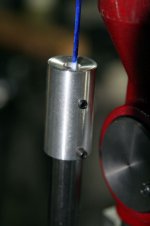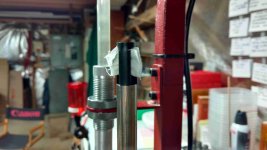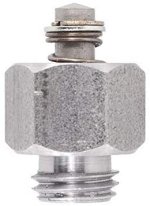Swifty Morgan
New member
When I got my press years ago, I had problems with the primer tube jumping out. I think this was due to Hornady's less-than-perfect fit and finish, which caused the primer slide to run roughly.
I made myself a primer tube cap to replace the plastic one. I'll post a photo. As you can see, it's aluminum, and the upper set screw fastens it to the inner primer tube. The lower screw can fasten it to the outer tube, but I have never had to tighten it.
Until yesterday, I didn't know the outer tube was intended to prevent shrapnel from escaping sideways during a primer detonation. The manual calls it a housing, which is not all that informative.
I'm wondering if this aluminum cap turns the housing into a bomb. With the plastic cap, there is more room for gas to get out, and the cap can fly off pretty easily, releasing pressure. The aluminum cap is held in place, and even if it were loose, the mass would confine the gases to some extent and possibly increase the likelihood that the housing would blow open.
So...am I concerned about nothing, or was I right to put the old plastic cap back on?

I made myself a primer tube cap to replace the plastic one. I'll post a photo. As you can see, it's aluminum, and the upper set screw fastens it to the inner primer tube. The lower screw can fasten it to the outer tube, but I have never had to tighten it.
Until yesterday, I didn't know the outer tube was intended to prevent shrapnel from escaping sideways during a primer detonation. The manual calls it a housing, which is not all that informative.
I'm wondering if this aluminum cap turns the housing into a bomb. With the plastic cap, there is more room for gas to get out, and the cap can fly off pretty easily, releasing pressure. The aluminum cap is held in place, and even if it were loose, the mass would confine the gases to some extent and possibly increase the likelihood that the housing would blow open.
So...am I concerned about nothing, or was I right to put the old plastic cap back on?



